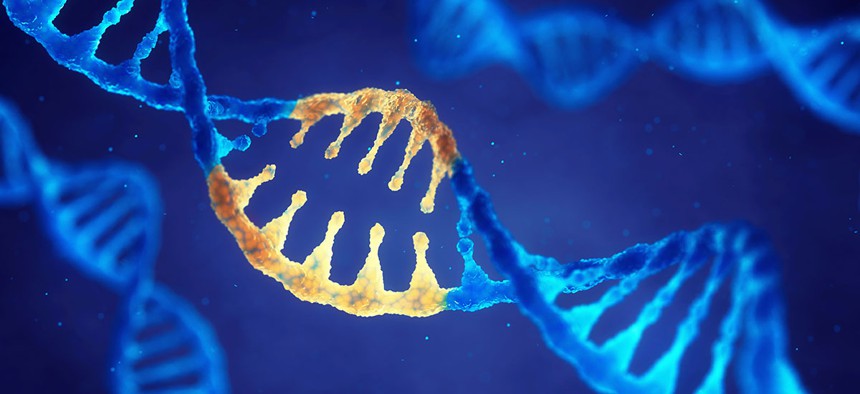Government Wants to Detect Bio-engineered Threats

nobeastsofierce/Shutterstock.com
Whether it's a lab goof or by design, the intelligence community wants to spot engineered biological organisms.
Spider-Man, the sharks from “Deep Blue Sea” and the modified dinosaurs from “Jurassic Park” all share one fictional commonality: genetically modified origins.
But while bio-engineered super-organisms might seem the stuff of science fiction, the federal government is treating them as an inevitable potential danger in seeking ideas from the public on how to detect such altered life forms.
On July 27, the Intelligence Advanced Research Projects Activity—the research arm of the U.S. intelligence community—will host a proposers’ day conference in Washington to gather information for a proposed research program for detecting genetically modified viruses, bacteria, insects, plants or animals.
» Get the best federal technology news and ideas delivered right to your inbox. Sign up here.
Short for Finding Engineering-Linked Indicators, the program called FELIX “aims to develop a suite of tools for the agnostic detection of engineered biological organisms” that are “either purposefully or accidentally developed and/or released with the potential to cause harm.”
Information gleaned from the conference could lead to a formal solicitation for what IARPA anticipates will be a two-phase program, with each phase divided into two focus areas.
The first phase would include the development of platform tools and technologies that could “detect signatures that a biological system has been engineered.” A fictional example of a less-nuanced version of such a technology appears in James Cameron’s “Aliens” movie, whereby humans use a robotically controlled laser scanner to search for hostile life in close proximity.
Under FELIX, a device might attempt to detect specific enhancements to biological organisms, such as cell frequency or improvements in speed.
FELIX’s first phase would also aim to create new methods or capabilities for modeling and analysis of engineering-linked indicators. IARPA concludes any rapid methodology for identifying whether organisms are genetically modified would require the analysis of “large, complex data sets.”
Phase 2 of FELIX would essentially be the optimization of the platform tools and analytic capabilities derived from phase 1.
“This includes both detection of increasingly sophisticated changes and an improved ability to detect a small number of engineered changes within a complex background,” the IARPA announcement states. “The end result of the program will be a suite of tools that enable improved detection of a variety of engineered changes across a range of engineered organisms and sample types.”
Should a solicitation arise, IARPA expects multidisciplinary teams to put forth the most viable ideas. Members may include experts in virology, synthetic and molecular biology, genomics, bioinformatics, computer science and statistical analysis and others, with participation encouraged from academic institutions and industry alike.
Those interested in the conference must register by July 20.






